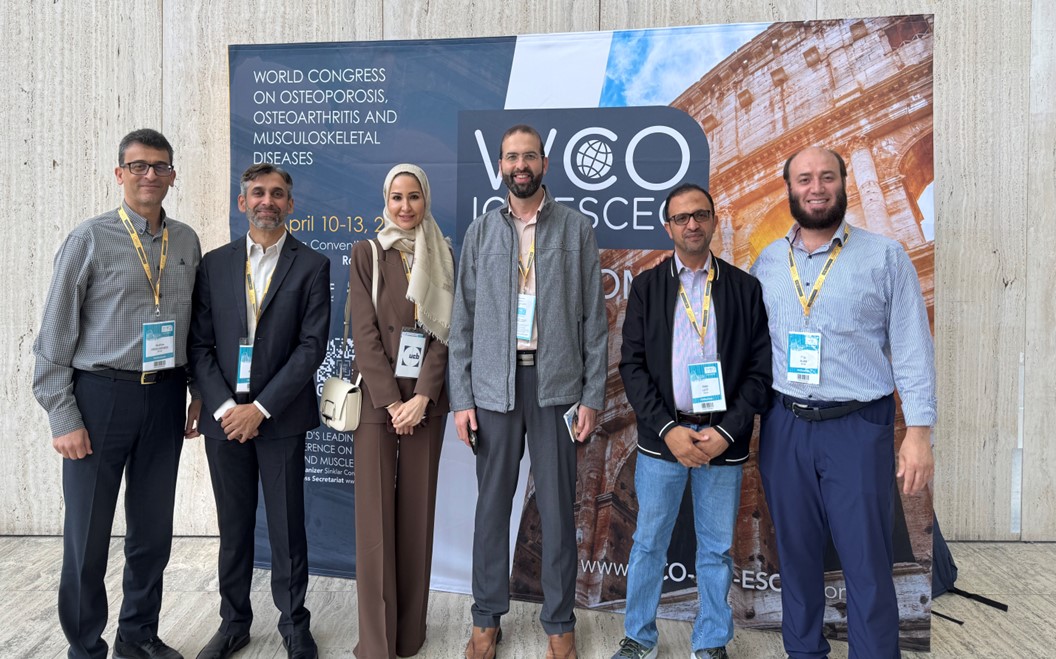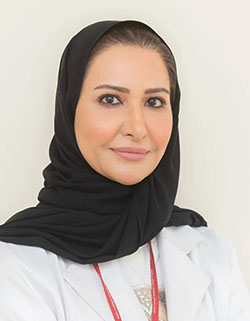Shaping the future of osteoporosis care: Qatar’s 2024 guidelines in focus

An in-depth conversation with Dr Samar Al Emadi on challenges, innovations, next steps, and advice for other countries aiming to develop updated guidelines.
In 2024, the Qatar Osteoporosis Association published the Guidelines for Fracture Risk Assessment and Management of Osteoporosis in Postmenopausal Women and Men Above the Age of 50, marking a significant step forward in osteoporosis care. These guidelines aim to enhance fracture prevention, improve early diagnosis, and ensure evidence-based treatment strategies.

To gain deeper insights into their development, implementation, and impact, we spoke with Dr Samar Al Emadi, co-author of the guidelines and chief of the Rheumatology division at Hamad Medical Corporation. In the interview, Dr. Al Emadi shares what makes these guidelines unique, the challenges encountered in their adoption, and how other countries might benefit from Qatar’s experience.
What was the motivation behind the creation of the new guidelines?
The creation of the new osteoporosis guidelines in Qatar was motivated by the absence of a national guideline for managing osteoporosis. It was crucial to standardize practices across various specialties. The guidelines were developed to align Qatar's approach with international best practices while considering the unique needs of the local population, including genetic, cultural, and lifestyle factors that influence bone health.
How do these guidelines differ from others in the field, and what key recommendations should be highlighted?
These guidelines are uniquely tailored to Qatar's local context, incorporating recommendations based on local epidemiological data while aligning with international standards. Notable differences include:
- emphasis on FRAX-based screening for all post-menopausal women and men over 50, rather than relying solely on DXA.
- early use of anabolic agents for very high-risk patients to optimize sequential therapy.
- use of age-dependent FRAX thresholds for initiating treatment instead of a fixed threshold.
What were some of the major challenges when writing the guidelines? And how did you overcome these challenges?
One major challenge was the lack of local data on osteoporosis. We overcame this by gathering local data, particularly after the introduction of the Fracture Liaison Service (FLS), which provided reliable data on hip fractures. The next major task was to get our own FRAX model, and with the support of the FRAX team at University of Sheffield we were able to achieve that in 2021.
Another challenge was deciding between traditional T-score-based thresholds vs FRAX-based thresholds to recommend treatment. Also, whether to opt for age-dependent or fixed FRAX thresholds. After consulting with international experts and extensive internal discussions, we opted for the age-dependent FRAX threshold, and we plan to revisit this decision over time. Collaboration with experts ensured that our recommendations were based on the latest research.
Do you have any advice for other countries that want to implement guidelines?
For countries aiming to implement similar guidelines, we recommend a collaborative approach involving healthcare providers, policymakers, and patient advocacy groups. Guidelines should be informed by local epidemiological data and available resources and need. Ongoing education and training for healthcare professionals are essential for effective implementation. Additionally, continuous monitoring and feedback are necessary to evaluate the guidelines' impact and refine them over time.
What is the current feedback from the hospital centers or policymakers regarding the new guideline?
Feedback from both hospital centers and primary care providers has been positive. Many healthcare professionals have praised the clarity and practicality of the guidelines. There has been a noticeable integration of the guidelines into clinical practice.
How have the new guidelines benefited healthcare professionals and patients in Qatar, or is it too early to tell?
While it's still early to assess the long-term benefits, there are already positive signs. Healthcare professionals report increased confidence in identifying high-risk patients due to the clear screening pathways and evidence-based treatment recommendations. More patients are being screened and treated. For patients, we anticipate that earlier intervention and increased awareness will lead to better outcomes, such as reduced fracture rates and improved quality of life. We will continue to monitor outcomes and adjust the guidelines as needed.
Is there a plan to promote the new guidelines at national congresses and other events?
Yes, the guidelines have already been presented at the Internal Medicine and Family Medicine conferences. There are plans to promote them at other conferences, and healthcare events. We are also considering a public health campaign to raise awareness about osteoporosis prevention and the new guidelines. Additionally, we plan to offer Continuing Medical Education (CME) programs to keep healthcare professionals up-to-date and ensure they can effectively apply the guidelines.
What do you see as the next steps for the prevention of osteoporosis in Qatar, and what role will the new guidelines play in achieving these steps?
The next steps include collaborating with primary care to establish population-based screening using FRAX, which will help in the early identification of patients who need treatment. Ongoing research and data collection will be crucial for refining our approach. We are currently collecting data about the major osteoporotic fractures. Also, we have identified a reference BMD curve for hips from young Qatari healthy individuals and found that it is similar to the NHANES population.
A key focus will be on increasing awareness among policymakers about the importance of osteoporosis as a national health priority. The new guidelines will serve as a foundation for these efforts, helping to shape the national strategy and improve both healthcare outcomes and quality of life for the population.